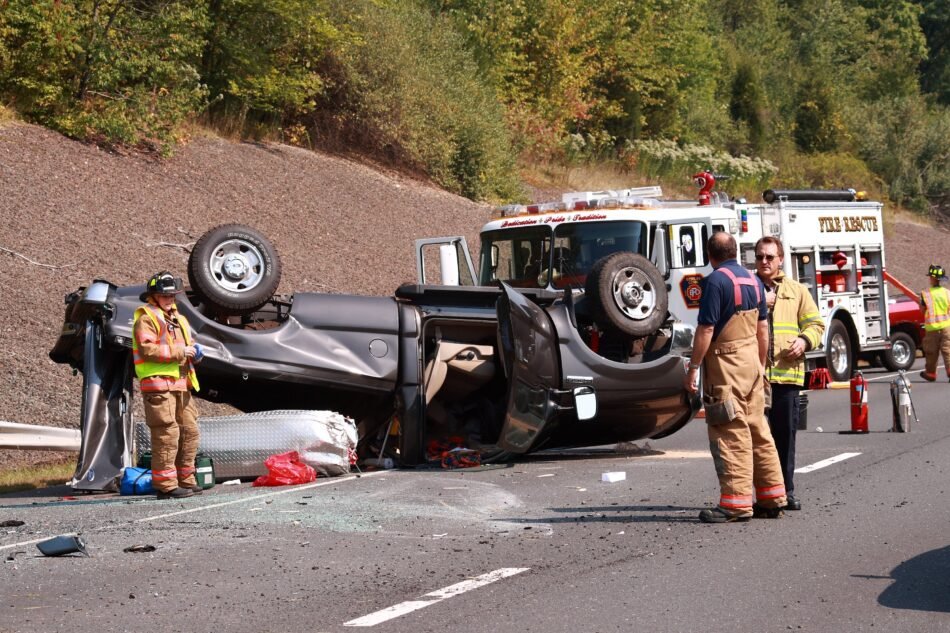Emergencies on the road can be unexpected and nerve-wracking situations that can catch even the most experienced drivers off guard. Being prepared for these situations is crucial to ensuring your safety and the safety of others on the road. In this comprehensive guide.
1. Stay Calm and Assess the Situation
In any emergency situation, the first and most important step is to remain calm. Panic can cloud your judgment and hinder your ability to make the right decisions. Take a deep breath and assess the situation around you. Is your vehicle obstructing traffic? Are there injuries? Once you have a clear understanding of the situation, you can move forward with a plan.
2. Move Your Vehicle to Safety
If your vehicle is obstructing traffic or in a dangerous position, it’s important to move it to a safer location, if possible. Turn on your hazard lights to alert other drivers, and carefully move to the shoulder of the road or a nearby parking lot. This will help prevent further accidents and ensure your safety while dealing with the emergency.
3. Contact Emergency Services
In the case of a severe accident, injuries, or hazardous conditions, dial emergency services immediately. Whether you need medical assistance or the help of law enforcement, getting professionals to the scene is paramount. Provide them with your location, a brief description of the situation, and any relevant details they might need.
4. Use Warning Signals
To alert other drivers of your situation, use warning signals such as road flares, hazard triangles, or reflective signs. These signals will increase your visibility and help prevent additional accidents. Place these warning devices a good distance away from your vehicle, creating a buffer zone for your safety.
5. Attend to Injuries and Offer Help
If there are injuries involved, prioritize attending to the well-being of those affected. If you have basic first aid knowledge and it’s safe to do so, provide assistance until medical professionals arrive. However, avoid moving seriously injured individuals unless absolutely necessary, as this could worsen their condition.
6. Exchange Information
In the event of a collision, exchange information with the other party involved. Obtain their name, contact details, insurance information, and license plate number. If there are witnesses, gather their information as well. This information will be crucial when filing insurance claims or police reports.
7. Document the Scene
Use your smartphone or camera to document the scene thoroughly. Take pictures of the vehicles involved, their positions, any damages, road conditions, and relevant signs or signals. These visual records can serve as valuable evidence for insurance claims or legal proceedings.
8. Notify Loved Ones
If the situation allows, it’s a good idea to notify your loved ones about the emergency and your location. This keeps them informed and reassured while you deal with the situation. A quick text or call can prevent unnecessary worry.
9. Tow and Repair
Depending on the severity of the situation, you might need to arrange for towing services. If your vehicle is not driveable, contact a reliable towing company to transport it to a repair shop. Be cautious of unsolicited towing services that might take advantage of the situation.
10. Follow Up and Report
After the emergency has been dealt with, follow up on the necessary procedures. File a police report if required and inform your insurance company about the incident. Keep all documents and records organized for a smooth claims process.
Emergencies on the road can be overwhelming, but with a calm and prepared approach, you can navigate through them with confidence. Remember, safety should always be your top priority.
Emergencies on the road can be nerve-wracking, but with the right knowledge and preparation, you can navigate these situations effectively. Remember to stay calm, assess the situation, and take appropriate action. Your safety and the safety of others should always be your top priority.
FAQs (Frequently Asked Questions)
Q. What should I include in my emergency kit?
A. An emergency kit should contain items like a flashlight, first aid supplies, water, basic tools, and a phone charger.
Q. Is it safe to change a tire on the side of the road?
A. Yes, but make sure to pull over to a safe location, turn on hazard lights, and use traffic cones or warning triangles to alert other drivers.
A. What steps can I take to prevent engine trouble?
Regularly maintain your vehicle, including oil changes, checking fluid levels, and addressing any warning lights promptly.
Q. How can I stay calm during a stressful roadside emergency?
A. Take deep breaths, focus on your surroundings, and remember that panicking can hinder your ability to make sound decisions.
Q. What legal obligations do I have after a minor collision?
A. Depending on local laws, you may need to exchange information with the other driver, report the incident, and cooperate with authorities.
At Ogonn Technology Car and Bike Rental Services, we understand the importance of being prepared for unexpected situations on the road. As your reliable partner in transportation, we emphasize the significance of knowing how to deal with emergencies effectively. Whether you’re renting a car or a bike from us, Your safety remains our top priority, and we believe that informed and prepared drivers contribute to safer roads for all.


